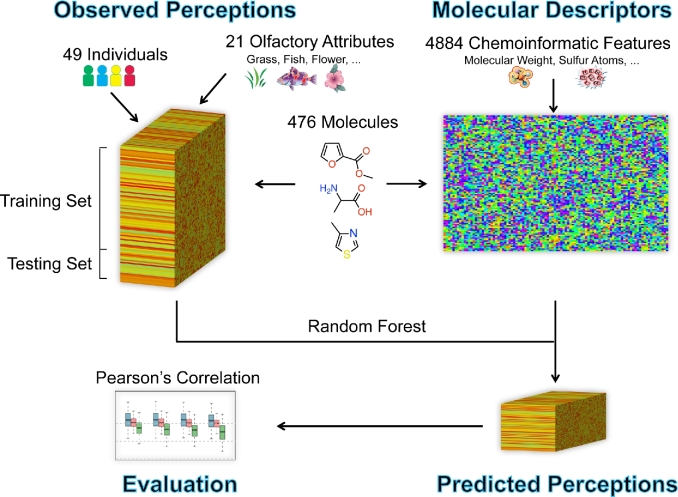Figure 1:
The overview of the olfaction prediction. The observed perceptions form a 3-dimensional array, where the 3 dimensions are 476 molecules, 49 individuals, and 21 olfactory attributes. The input chemoinformatic features form a 2-dimensional matrix, where the rows are 476 molecules and columns are 4884 molecular descriptors. Our random forest model is built on the training set (407 molecules), and the individual responses for the test set (69 molecules) are predicted. The final evaluation is based on the Pearson's correlation between observed and predicted perceptions.

